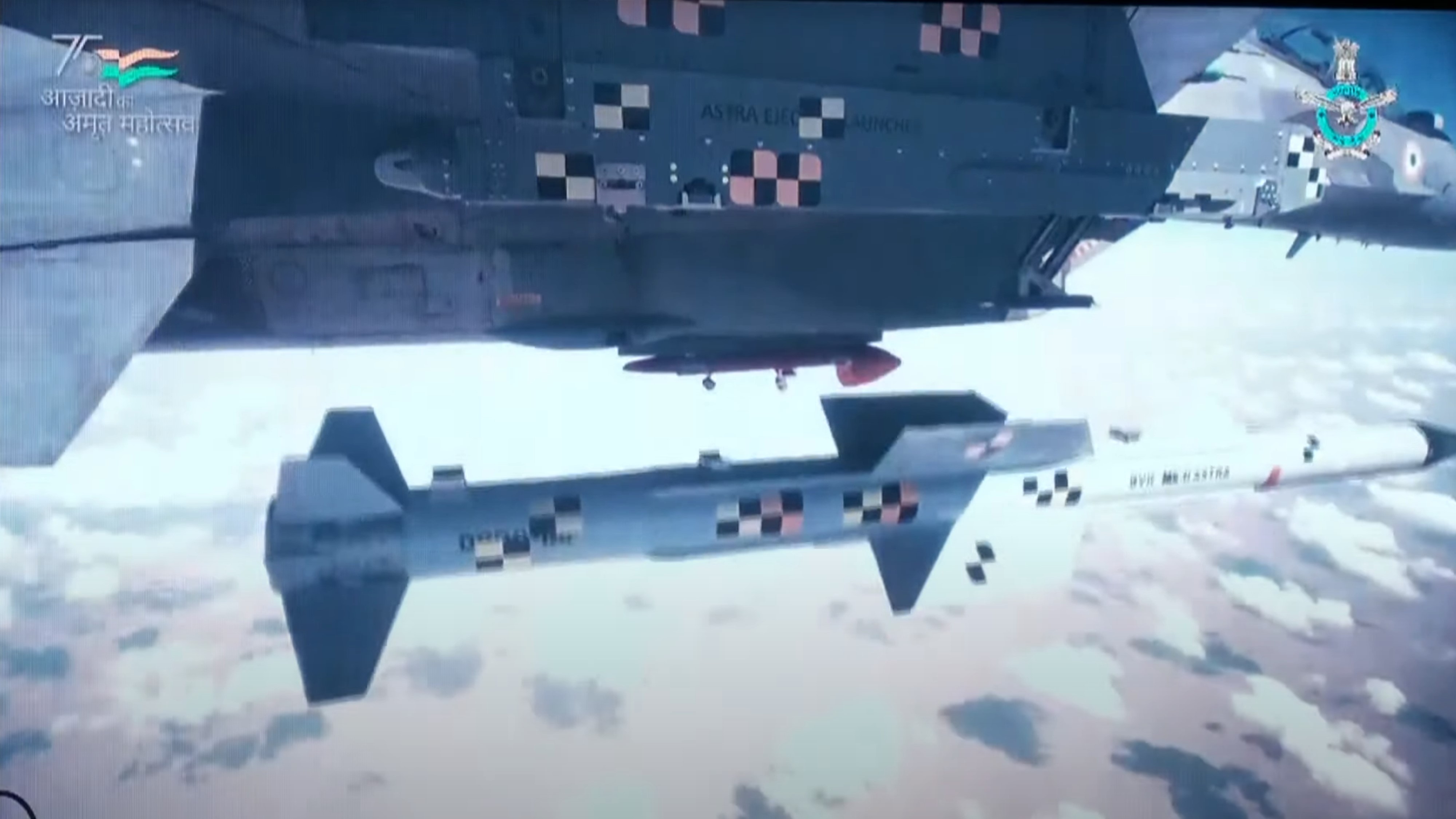SOURCE: RAUNAK KUNDE / NEWS BEAT / IDRW.ORG


The Indian Air Force (IAF) is on the cusp of a significant leap in its air combat capabilities as the Astra MkII Beyond Visual Range Air-to-Air Missile (BVRAAM) enters its final round of user trials and limited series production (LSP), according to sources cited by idrw.org. This next-generation missile, boasting a range of 140–160 km, is poised to become a cornerstone of India’s indigenous air defense arsenal, with integration planned for the Tejas Mk1 and Mk1A fighter jets later this year. Trials from these platforms are expected to commence by mid-2026 or later, marking a critical step toward operational deployment.
Developed by the Defence Research and Development Organisation (DRDO), the Astra MkII builds on the success of its predecessor, the Astra MkI, which has a range of 80–110 km and is already integrated with the IAF’s Su-30MKI and Tejas Mk1 aircraft. The Astra MkII, with its extended range and advanced dual-pulse solid rocket motor, offers superior endgame performance, enhancing maneuverability and kill probability against agile targets. Its range places it in the same league as global benchmarks like the AIM-120D AMRAAM and China’s PL-15E, providing the IAF with a potent tool to counter modern aerial threats, including Pakistan’s JF-17 Block III and China’s J-10C fighters.
The missile’s advanced Active Electronically Scanned Array (AESA) seeker enhances precision and effectiveness, even in electronic countermeasures-heavy environments. The dual-pulse motor allows the missile to conserve energy during mid-course flight and deliver a second burst of propulsion in the terminal phase, significantly expanding its no-escape zone (NEZ)—the range within which a target cannot evade the missile. Priced at approximately ?7–8 crore per unit, the Astra MkII is a cost-effective alternative to imported missiles like the MBDA Meteor, which costs around ?25 crore, aligning with India’s push for self-reliance under the “Atmanirbhar Bharat” initiative.
The Astra MkII’s integration with the Tejas Mk1 and Mk1A platforms is a key milestone in enhancing the Light Combat Aircraft’s (LCA) air-to-air combat capabilities. The Tejas Mk1, operational since 2016, and the advanced Mk1A variant, equipped with the ELTA EL/M-2052 AESA radar (to be replaced by the indigenous Uttam AESA radar in later batches), are designed for air superiority and multi-role missions. The successful test-firing of the Astra MkI from a Tejas Mk1 prototype on March 12, 2025, at the Integrated Test Range in Chandipur, Odisha, demonstrated the platform’s ability to deploy BVRAAMs, scoring a direct hit on a target at over 100 km. The upcoming trials of the Astra MkII will further validate its compatibility with the Tejas’ advanced avionics and radar systems, ensuring seamless performance in real-world combat scenarios.
According to idrw.org, the integration process is expected to begin later this year, with trials from the Tejas Mk1/Mk1A slated for mid-2026 or beyond. These trials will focus on validating the missile’s performance with the EL/M-2052 AESA radar, which offers superior target detection and tracking compared to the mechanically scanned EL/M-2032 radar used in earlier Tejas variants. The IAF’s deployment of Tejas Mk1 at Leh and plans for Mk1A squadrons at Nal and Naliya airbases highlight the strategic importance of equipping these jets with advanced weaponry like the Astra MkII, particularly in contested regions along India’s borders with Pakistan and China.
Bharat Dynamics Limited (BDL) has commenced limited series production of the Astra MkII, following extensive captive flight trials on the Su-30MKI, which confirmed the missile’s compatibility with advanced radar and fire control systems. The LSP phase, approved earlier this year, ensures rapid replenishment capabilities for the IAF, with full-scale production expected to begin by 2027 after the completion of user trials in 2026. BDL’s Bhanur facility in Telangana, which already produces the Astra MkI, is scaling up to meet the IAF’s demand for the MkII, with an annual production capacity in the double digits.
The Astra MkII’s development comes amid heightened regional tensions, as demonstrated during Operation Sindoor in May 2025, where the IAF’s precision strikes exposed vulnerabilities in Pakistan’s air defense network. The missile’s extended range and AESA seeker make it a critical counter to Pakistan’s PL-15E and China’s PL-15 missiles, which have ranges of 145–200 km. By equipping the Tejas Mk1A with the Astra MkII, the IAF aims to maintain air dominance in strategically sensitive areas like Nal Air Base, just 200 km from the Pakistan border, and the North-Eastern sector facing China.
NOTE: Article cannot be reproduced without written permission of idrw.org in any form even for YouTube Videos to avoid Copy right strikes. Websites doing illegal reproductions will get DMCA and Legal Notices.